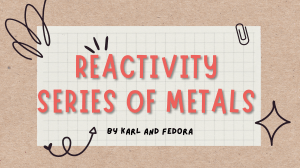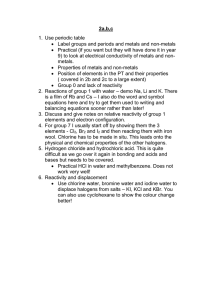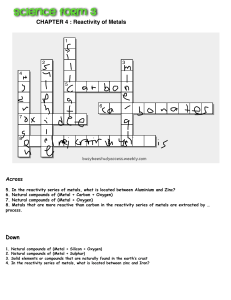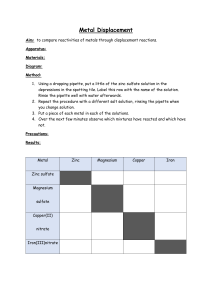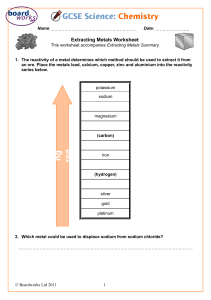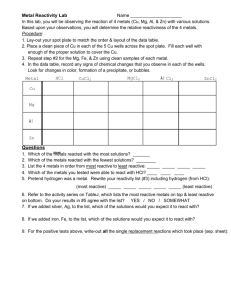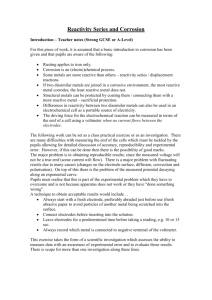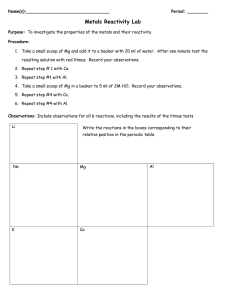Metals and non-metals
advertisement
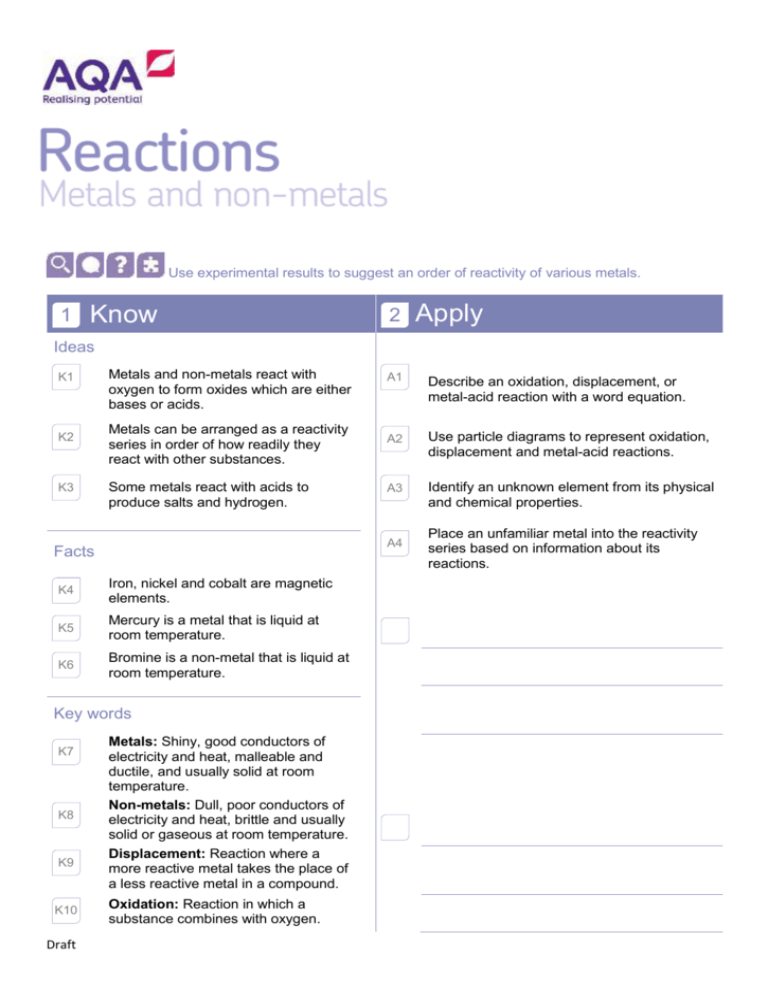
Use experimental results to suggest an order of reactivity of various metals. 1 Know 2 Apply Ideas K1 K2 K3 Metals and non-metals react with oxygen to form oxides which are either bases or acids. Metals can be arranged as a reactivity series in order of how readily they react with other substances. Some metals react with acids to produce salts and hydrogen. K4 Iron, nickel and cobalt are magnetic elements. K5 Mercury is a metal that is liquid at room temperature. K6 Bromine is a non-metal that is liquid at room temperature. Key words K8 K9 K10 Draft Describe an oxidation, displacement, or metal-acid reaction with a word equation. A2 Use particle diagrams to represent oxidation, displacement and metal-acid reactions. A3 Identify an unknown element from its physical and chemical properties. A4 Facts K7 A1 Metals: Shiny, good conductors of electricity and heat, malleable and ductile, and usually solid at room temperature. Non-metals: Dull, poor conductors of electricity and heat, brittle and usually solid or gaseous at room temperature. Displacement: Reaction where a more reactive metal takes the place of a less reactive metal in a compound. Oxidation: Reaction in which a substance combines with oxygen. Place an unfamiliar metal into the reactivity series based on information about its reactions. K11 3 E1 E2 E3 Draft Reactivity: The tendency of a substance to undergo a chemical reaction. Extend Deduce the physical or chemical changes a metal has undergone from its appearance. Justify the use of specific metals and non-metals for different applications, using data provided. Deduce a rule from data about which reactions will occur or not, based on the reactivity series.
